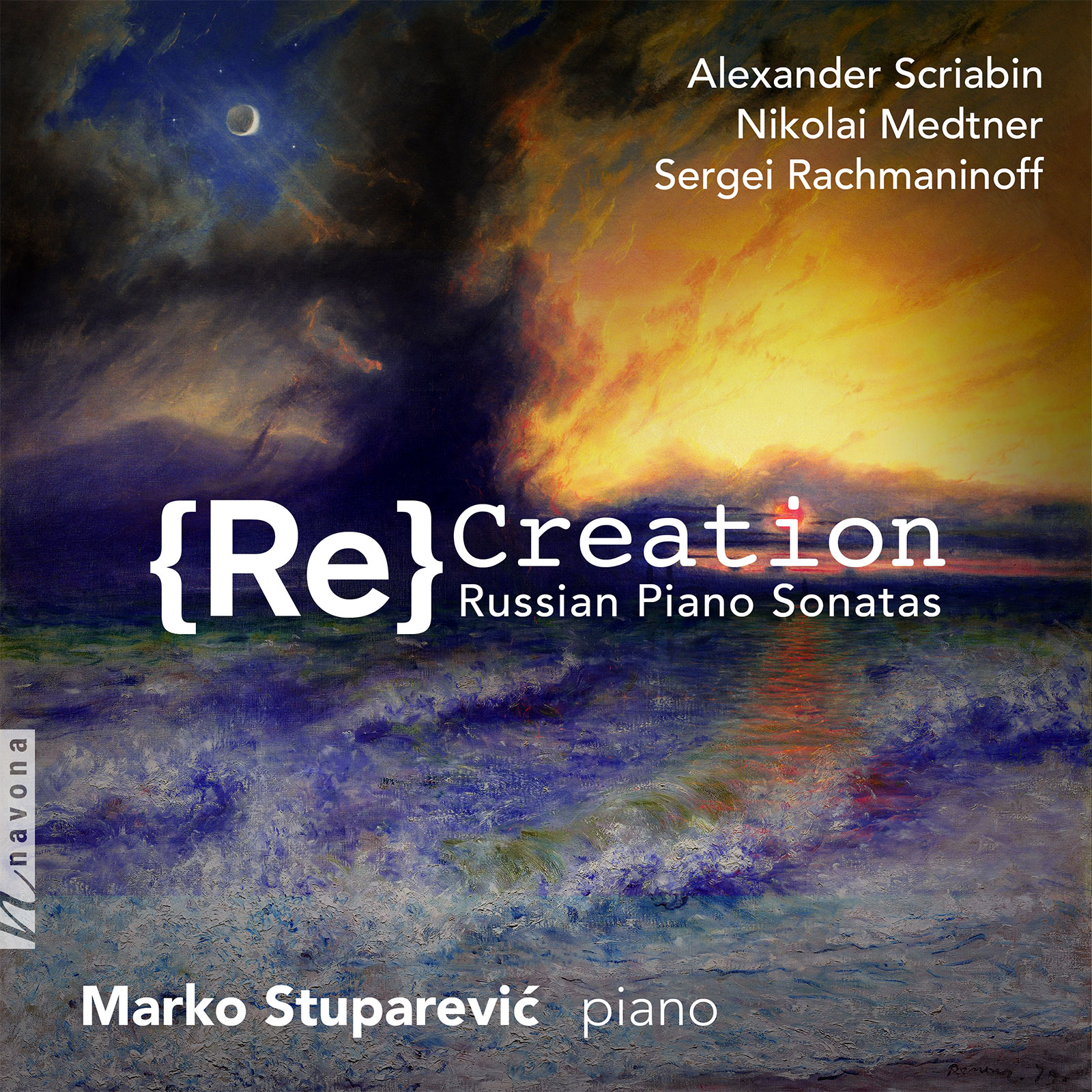(Re)Creation
Marko Stuparević pianist
Alexander Scriabin composer
Nikolai Medtner composer
Sergei Rachmaninoff composer
(RE)CREATION from Navona Records and pianist Marko Stuparević is centered on the acts of creation and re-creation, observed through three piano sonatas of three Russian composers: all pianists, contemporaries, and representatives of some of the most notable works of 20th century Russian piano music. Performed by the award-winning pianist, each sonata is rich with advanced compositional techniques and the individual ideologies of their composers, crafted with cyclical forms representing the circle of life. The works of Sergei Rachmaninoff, Alexander Scriabin, and Nikolai Medtner are on full display, born and immortalized into the never-ending life cycle they mirror.
Listen
Stream/Buy
Choose your platform
Track Listing & Credits
| # | Title | Composer | Performer | |
|---|---|---|---|---|
| 01 | Sonata No. 5, Op. 53 | Alexander Scriabin | Marko Stuparevic, piano | 13:13 |
| 02 | Forgotten Melodies I, Sonata-Reminiscenza Op. 38, No. 1 in A minor | Nikolai Medtner | Marko Stuparevic, piano | 14:28 |
| 03 | Piano Sonata No. 2 in B-flat minor, Op. 36: Allegro agitato | Sergei Rachmaninoff | Marko Stuparevic, piano | 8:26 |
| 04 | Piano Sonata No. 2 in B-flat minor, Op. 36: Non allegro—Lento | Sergei Rachmaninoff | Marko Stuparevic, piano | 6:24 |
| 05 | Piano Sonata No. 2 in B-flat minor, Op. 36: Allegro molto | Sergei Rachmaninoff | Marko Stuparevic, piano | 6:06 |
Recorded March 31 – April 4, 2021 at Velika Dvorana Zadužbine Ilije M. Kolarca in Belgrade, Serbia
Recording Session Producer Zoran Marinković
Recording Session Engineer Zoran and Miloš Marinković
Executive Producer Bob Lord
Executive A&R Sam Renshaw
A&R Director Brandon MacNeil
A&R Ivana Hauser
VP of Production Jan Košulič
Audio Director Lucas Paquette
VP, Design & Marketing Brett Picknell
Art Director Ryan Harrison
Design Edward A. Fleming
Publicity Patrick Niland, Aidan Curran
Content Manager Sara Warner
Artist Information

Marko Stuparević
Pianist Dr. Marko Stuparević has appeared in over 500 concerts and festivals over the United States, Israel, France, Serbia, Iceland, Bosnia and Herzegovina, Czech Republic, Bulgaria, Montenegro, and Slovakia as a solo performer and chamber musician. Winning piano competition prizes resulted in many notable solo recitals in the United States and Europe, including Carnegie’s Weill Recital Hall and many other important venues. Stuparević has performed as soloist with Connecticut Valley Symphony Orchestra (under Joseph Hodge), Razgrad Philharmonic (Krasen Ivanov), Symphony Orchestra of the Army House of Serbia (Simone Fermani), National Symphony of Bulgaria (Stanislav Usev), and Foot in the Door Ensemble (Glen Adsit).
Notes
This program is based on the ideas of creation and re-creation, observed through three piano sonatas of three Russian composers: all pianists, contemporaries, and friends. Sergei Rachmaninoff’s Sonata No. 2 Op. 36 in B-flat minor, Alexander Scriabin’s Sonata No. 5 Op. 53, and Sonata-Reminiscenza Op. 38 by Nikolai Medtner represent some of the most notable works of 20th century Russian piano music, and the most important works of these composers in the sonata genre.
The act of composition, or even a transcription, is an act of creation, according to Ferruccio Busoni, in his famous Sketch of a New Aesthetic of Music in 1907:
“Every notation is, in itself, the transcription of an abstract idea. The instant the pen seizes it, the idea loses its original form. The very intention to write down the idea, compels a choice of measure and key…Again, the performance of a work is also a transcription, and still, whatever liberties it may take, it can never annihilate the original.”
— Marko Stuparević

